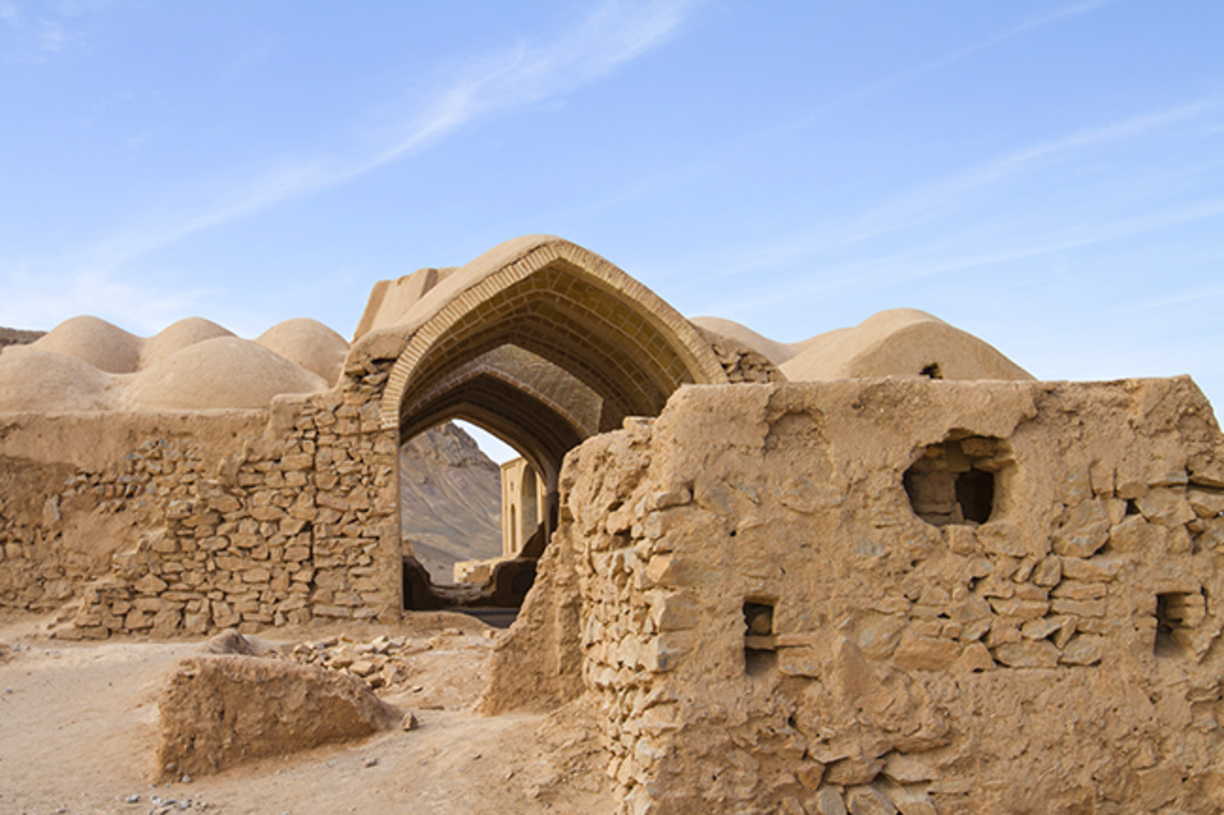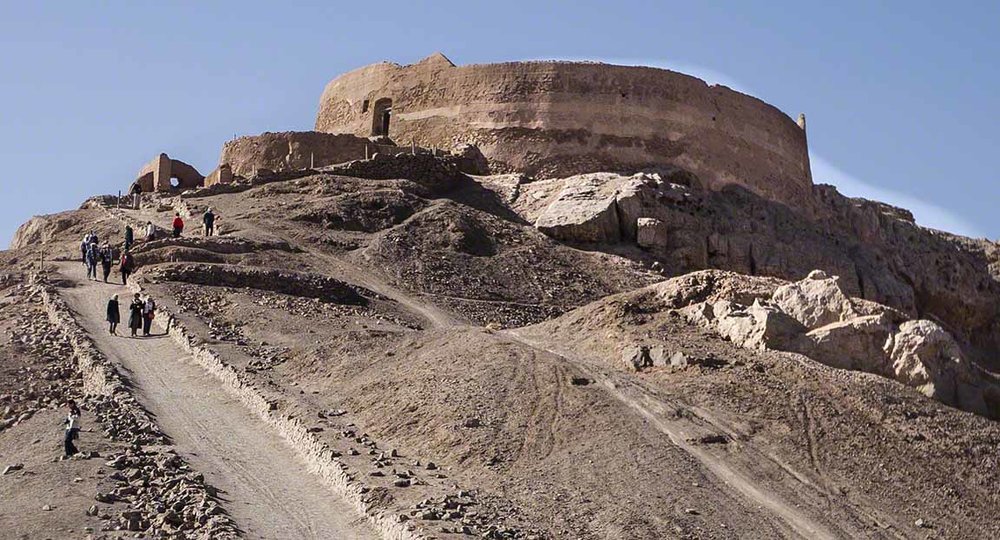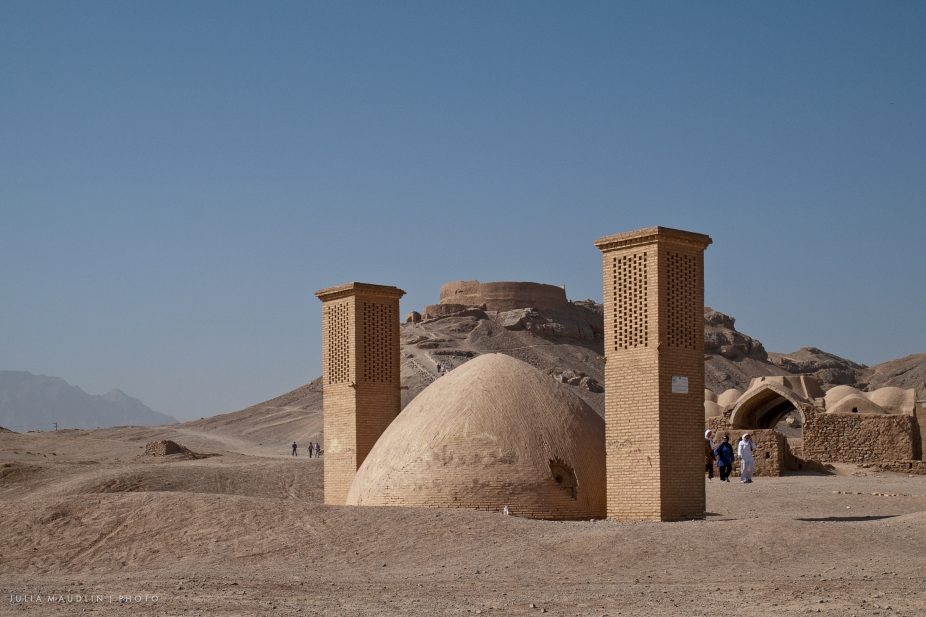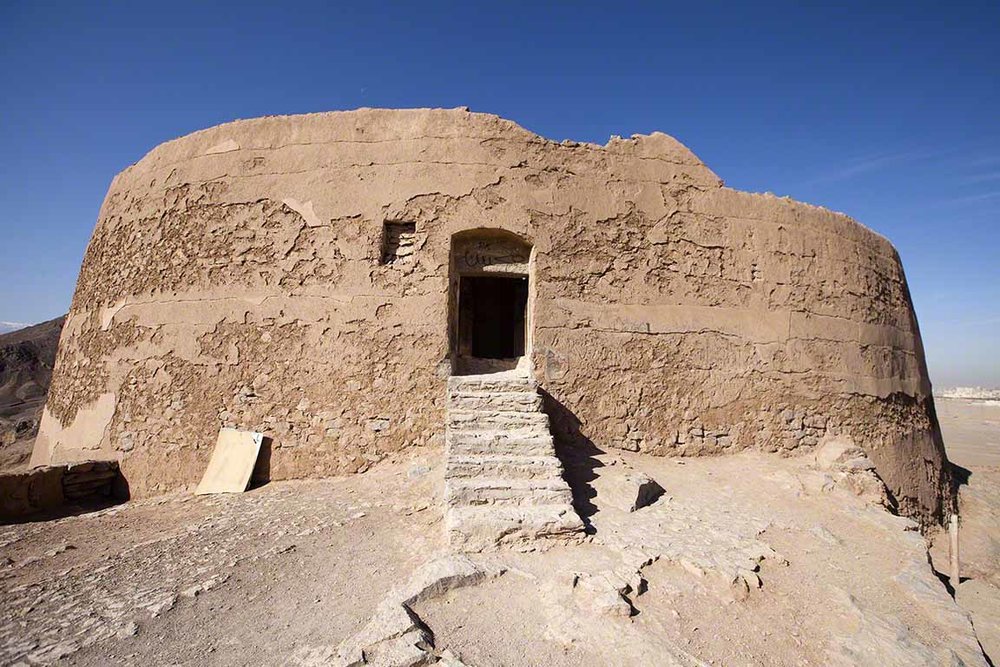Zoroastrian Towers of Silence
A tower of silence (known also as a ‘dakhma’) is a type of structure used for funerary purposes by adherents of the Zoroastrian faith. This Zoroastrian practice for the disposal of the dead involves the exposure of the corpse to the sun and vultures. This practice has been used traditionally by Zoroastrians, though it has become less common in recent times. As a result, there are a number of disused towers of silence, which no doubt have an air of mystery around them.
The exposure of dead bodies to scavenging animals is recorded by the 5th century Greek writer Herodotus to have been practiced by the Persians. Therefore, it would be reasonable to date this Zoroastrian practice to this period, and quite possibly even further back in time. There is a rationale for this treatment of the dead. According to Zoroastrian belief, the four elements – fire, water, earth and air, are sacred, and ought not to be polluted by the disposal of the dead. Cremation, for example, is believed to cause pollution to fire, air, and at times river water as well, whilst burial (without adequate lining of the grave) causes pollution to the earth and ground water.
Until 40 years ago, corpses could still be found on top of the Towers of Silence in Yazd, Iran, slowly disintegrating or being picked apart by desert vultures. In the Zoroastrian tradition, once a body ceases to live, it can immediately be contaminated by demons and made impure. To prevent this infiltration, Zoroastrians purified the dead body by exposing it to the elements and local fowl on top of flat-topped towers in the desert called dakhmas. According to a tradition dating back over 3,000 years, bodies were arranged on the towers in three concentric circles. Men were placed in the outer circle, women in the middle, and children in the inner-most ring. Bodies were then left until their bones were bleached by the elements and stripped by the vultures.
After the process of purification, bones were placed in ossuaries near, or inside, of the towers. Ossuaries from these rituals have been discovered from the 4th and 5th century BCE. Similar dakhmas exist just outside of Mumbai, India, as well, although the most prominent “Towers of Silence” are in Iran. As Iran developed and urbanized, dakhmas became increasingly closer to city limits, severely curtailing their use. Since the 1970s, the use of dakhmas has been illegal in Iran, forcing orthodox Zoroastrian’s to adapt to new burial methods. Many in the Zoroastrian community have moved to burying bodies beneath concrete, to keep out all contaminants. Although the towers are no longer used in ceremony, they can be visited along with a number of the ossuaries in the area.
In order to avoid polluting these elements, Zoroastrians resorted to other means of disposing their dead. The most notable of these is the exposure of the dead to scavenging animals, which is the idea behind the construction of the towers of silence. Incidentally, the English term of this structure has been attributed to Robert Murphy, a translator in the service of the British colonial government in India during the early 19 th century.
At present, it is not entirely clear as to when the earliest of these structures were built. Nevertheless, the towers of silence that are in existence today may have the same or a similar construction to the ones used in the past. These towers were essentially raised platforms with three concentric circles within them. The bodies of men were arranged on the outer circle, those of women in the middle circle, and those of children in the inner circle. The dead were left on the tower of silence, where their flesh would be eaten by vultures. Provided that the vultures are present in adequate numbers, the flesh may be completely stripped from the bones in less than half an hour.
Towers of silence can be found in Iran and in India, where Parsi communities exist. In Iran, towers of silence were in use until this funerary practice was banned by the government during the 1970s. In a report from 2015, it was written that India has a Parsi population of around 61,000. Of these, 45,000 live in Mumbai. Hence, it is in this city that several towers of silence may be found.
Unlike in Iran, the problem faced by the Parsis of India is that of a depopulation of vultures. The decline in the vulture population was a result of the scavengers feeding on the carcasses of livestock that were given Diclofenac, a type of painkiller. This caused the vultures to suffer from irreversible kidney failure, causing their deaths. As a result, there were not enough vultures for the disposal of the dead. Whilst some in the Parsi community have decided to adopt other forms of funerary practices, such as burial or cremation, others are taking steps to maintain the tradition, for instance, by constructing aviaries, where vultures could live and breed, near the towers of silence.
“Must do in Yazd”
Unique place to visit. Read a bit about the background before you come as all explanation is only in Farsi.
Walk up the tower and try to imagine how the burial ceremony must have been like in those days. A must do when in Yazd. (Isabella Deruiter form Rotterdam, the Netherlands; Reviewed October 2017)






